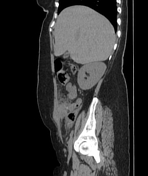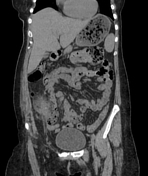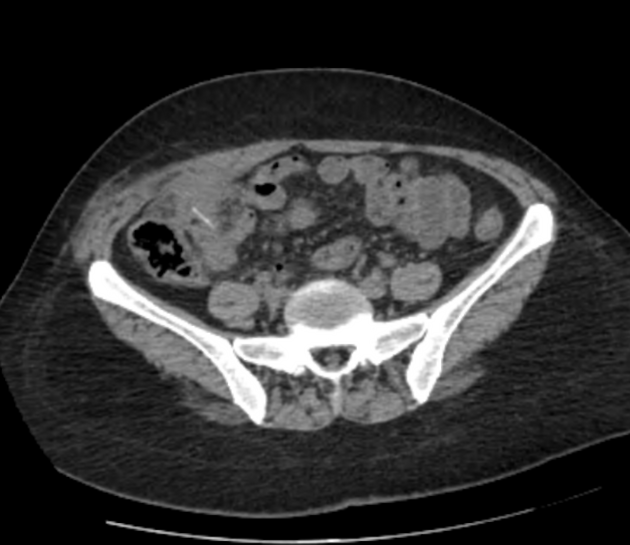Presentation
Acute right iliac pain with suspected right ureteric stone. History of appendectomy 15 years ago.
Patient Data







The right iliac fossa is the seat of an extensive inflammatory process with phlegmon formation surrounding a linear hyperdensity.
Findings are suggestive of ingested fishbone possibly perforating the terminal ileal loop or the ascending colon, with surrounding pericolonic inflammatory changes and early abscess formation.
Case Discussion
The patient was taken to the operating room. Surgical exploration revealed right iliac fossa extensive inflammatory changes surrounding a small fishbone perforating the terminal ileal loops.
Fish bones are more commonly ingested than chicken or pork bones. Fortunately, most of them pass asymptomatic and exit the gastrointestinal tract spontaneously. However, fish bones can get impacted in any part of the aerodigestive tract and cause symptoms. The most common complications are GIT perforation, obstruction, and abscess formation.
Most of them get lodged in the oral cavity or pharynx mainly in the tonsils or at the base of the tongue, however, they may pass distally and get lodged lodge in any other part of the gastrointestinal tract.
In the lower gastrointestinal tract perforations usually occur at the less mobile bowel segments or bowel with acute angulation such as at the ileum. Also, the rectosigmoid junction is the most common site of fish bone impaction in the large bowel.
Radiographic features include localized wall thickening, pneumoperitoneum, mesenteric fat stranding, and abscess formation.




 Unable to process the form. Check for errors and try again.
Unable to process the form. Check for errors and try again.